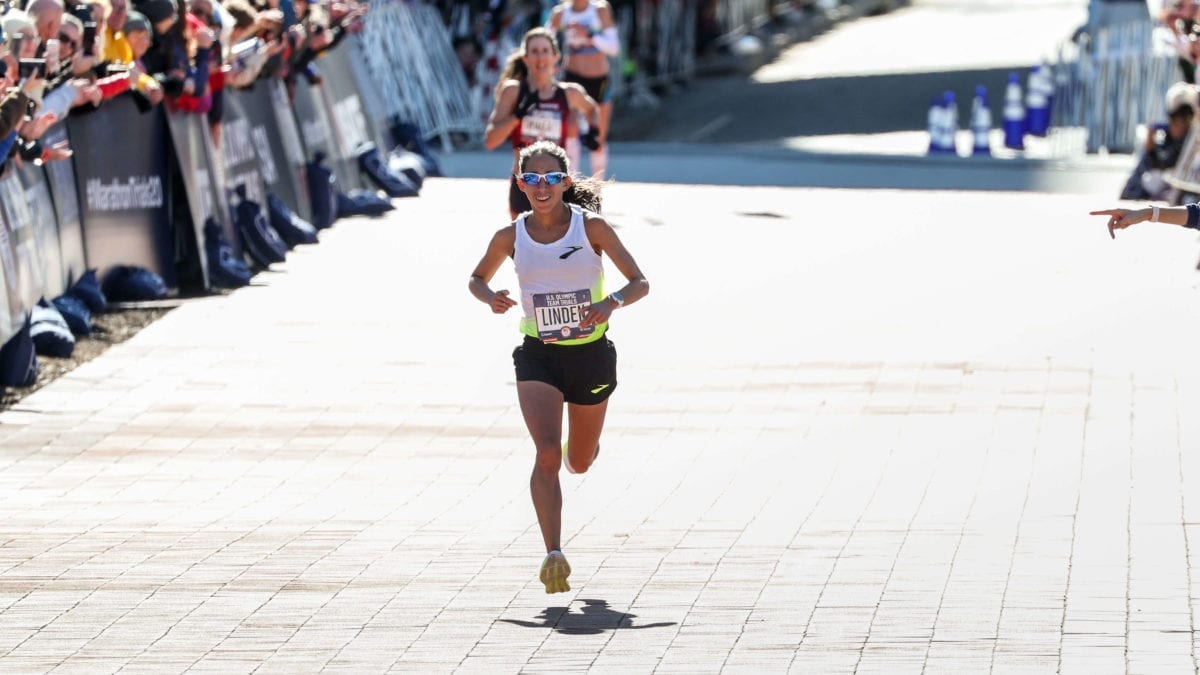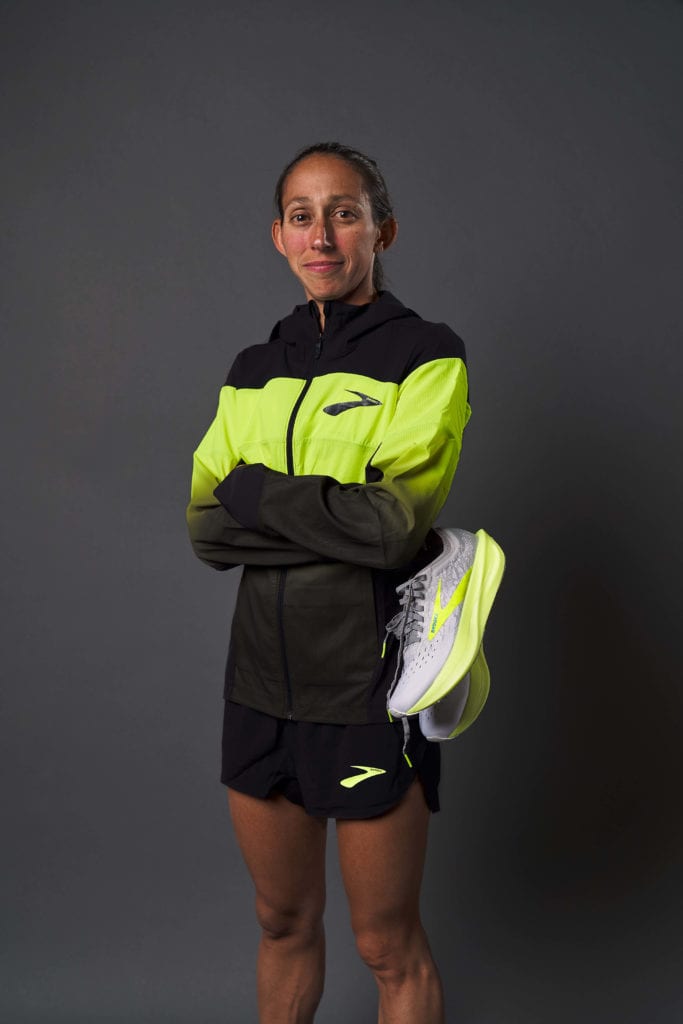A week of training with Des Linden
What peak marathon training looks like for this Boston champ

Des Linden has had an impressively long running career. The Michigander and two-time Olympian won the 2018 Boston Marathon, becoming the first American woman to win the race in 33 years. While 2020 has put some of Linden’s immediate running goals on hold, she’s still out there grinding and preparing for her next race – whenever that may be. Here’s a look at a week in the life of Linden when she’s preparing for a marathon.

RELATED: Des Linden has a month-long running challenge that anyone can join
A week in the life of Des
Linden says her schedule usually includes three quality sessions a week and four recovery days. “Monday is recovery, Tuesday is a quality session, Wednesday recovery, Thursday is another quality session, Friday and Saturday are recovery and Sunday is a long run. Depending on how my body is feeling we might cut that Thursday session and instead add some extra work to the long run.” Her recovery days consist of 12 morning miles and four afternoon miles, totalling 115 to 130 miles per week. She’d hold this pattern for four to five weeks as the meat and potatoes of her build. On top of running, she strength trains two to three times a week after hard sessions and long runs.
Longevity
You don’t have a career as long as Linden’s without listening to your body. The Boston Marathon champ says this has been important for her success. “Taking breaks is key for me. That means two weeks off after the marathon where I literally get out of shape. Then I’ll slowly build up for a month after that. Once I’ve built for a month, I’ll pick the next goal race. You have to give yourself time to get out of shape – or at least that’s how I’ve always done it.”
Linden says that as she gets older, her breaks have gotten longer as well. “Now I err on the side of taking more time than I think I need. I’m really conscious of rest.”
https://www.instagram.com/p/CGK8Am0D7Gw/
Her favourite gear
Linden uses Coros watches to help her stay on track. She says the data is crucial to understanding how her body is feeling. “My go-to is the Apex, but I recently trialed the Pace 2 and I was shocked at how light it is. It really has everything I need in a watch. I always run with GPS because it means I’ll have access to the data later. This way, if I have a bad workout, I can go back and see if there’s been something different in my training.”
Linden says she turns off all beeping and notifications on her watch, but she still wants to have it there as a reference and detailed training log. “I don’t want to be guided by my watch while I’m running, but I do want to look at the data after. The only tools you really need in running are your shoes and your watch.”
https://www.instagram.com/p/CF2wZtgHJGR/
Linden says what sets Coros apart is the battery life and the watches’ intuitive nature. “I feel like a lot of watches I’ve trialed that I’ve had to learn, but I haven’t needed to do that with any of the Coros watches. They’re easy to get comfortable with.” As a runner who likes to keep things simple and straightforward, Linden really appreciates this.
What’s next?
Like everyone else, Linden isn’t sure what her next race will be. “This year has put a hold on everything, so I’m not sure what comes next for me. I do know that I’m not finished with the roads yet.” However, while Linden has a few more good marathons in her legs, she’s also been open about a move to the trails in the near future. “I want to get to the trails before I’m too late because I’d like to be competitive in that arena as well. For now, it’s a matter of working in the trail stuff to accommodate the roads, because I’m not done with major marathons just yet.”


